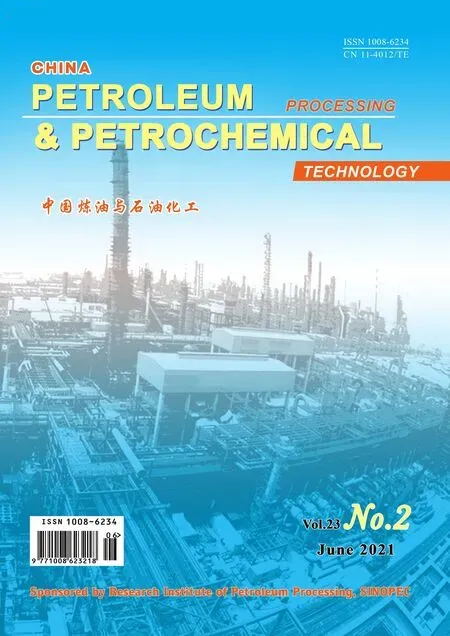Catalytic System for Manufacturing Butanol via Hydroformylation of Low-Carbon Olefins Developed Jointly by CNOOC and Others
Recently, the project “Development and application of low-temperature and high-selectivity catalytic system for hydroformylation of low-carbon olefins” jointly undertaken by the China National Offshore Oil Company(CNOOC) Group, the CNOOC Refining and Chemical Research Institute (Beijing), the CNOOC Tianjin Chemical Engineering and Design Institute, the Shenhua Baotou Coal Chemical Engineering Company, and the Yan’an Energy Chemical Company.
The manufacture of aldehydes and alkanols via hydroformylation of low-carbon olefins is an important route for extension, development and high value-added utilization of olefin resources originating from refiningbased chemicals and coal chemicals. However, the imported overseas technology and catalysts would result in high licensing cost and operating cost.
The main innovative items of this joint development project include: development of di-phosphine ligands with a novel structure for achieving low-temperature and highly selective catalysis for hydroformylation of low-carbon olefins;development of novel process for liquid-phase circulation of low-carbon olefins and multi-stage extraction of feedstock for achieving high-efficiency recycling of catalytic system;and development of a green technology for synthesis of rhodium catalyst and technology for high-efficiency recovery of spent catalyst to achieve management of whole catalyst lifetime starting from preparation of rhodium catalyst through catalyst application to spent catalyst recovery and reuse.The novel rhodium/di-phosphine ligand catalytic system has been applied in the commercial unit for hydroformylation of mixed C4olefins for producing 2-propylheptanol and the propylene hydroformylation unit for manufacture of butanol, with the production results demonstrating that this catalytic system can achieve a highly active and selective hydroformylation of low-carbon olefins under mild reaction conditions. In comparison with the similar domestic and overseas products, our product can be manufactured with such advantages as enhanced reactivity, reduced consumption norms, better comprehensive performance indexes,better cost reduction, and greater economic benefits.
- 中國煉油與石油化工的其它文章
- Effect of Water on Extractive Desulfurization of Simulated FCC Gasoline Using Ionic Liquid NMP-FeCl3-H2O
- High-efficiency Extraction of Bitumen from Oil Sands Using Mixture of Ionic Liquid [Emim][BF4] and Dichloromethane
- Corrosion Inhibition of the Bi-enzyme Doped Epoxy Resin for Q235 Carbon Steel in Circulating Cooling Water
- Fabrication of Fe Nanoparticles into N-doped Mesoporous Carbon Nanotube Derived from Rice-Like Fe/N-MOF and Its ORR Catalytic Performance for MFC
- Co-Ce-Ni Ternary Metal Oxide Modified N-activated Carbon:The Superior Low Temperature NH3-SCR Performance
- Synthesis of IM-5 Zeolite by Template Pre-Reaction

